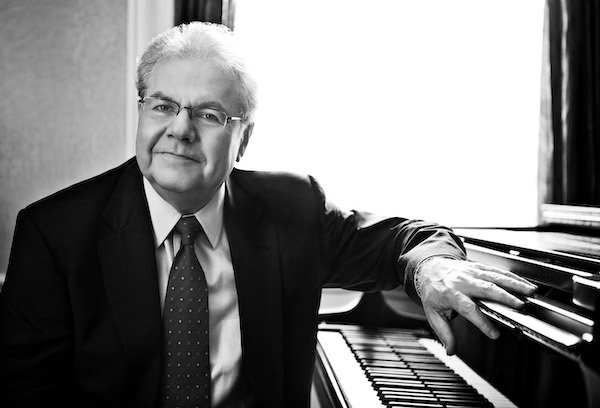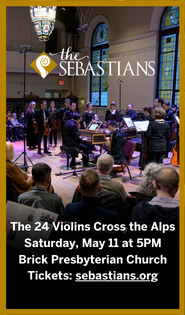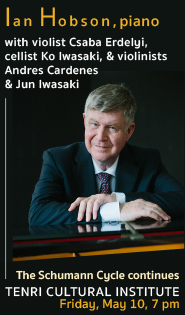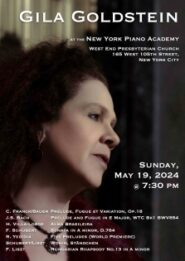Ax goes deep, illuminating late Chopin works at Carnegie Hall
The main challenge when attending a performance by pianist Emanuel Ax of late works by Frédéric Chopin, such as the one at Carnegie Hall Thursday, is keeping one’s expectations under control.
How could one’s heart not beat a little faster at the thought of the Polish-born American pianist, at 72 in the late stages of a distinguished career, interpreting the visionary last utterances of Poland’s—and the piano’s—greatest composer?
In the event—which consisted of eleven of the single-movement pieces on which Chopin’s reputation largely rests, then closed with the Third Piano Sonata—Ax’s late word on the Polish master wasn’t the last word, if there is such a thing. But the well-designed program, delivered with unflagging imagination and deep resources of tone and touch, made for a satisfying, often illuminating, recital.
For much of the evening, as barcarolle followed mazurka followed nocturne, introspection was the predominant mood, pianissimo the go-to dynamic. But Ax had plenty of power and brilliance in reserve, and when he let it fly the effect was stunning.
The evening began tentatively—quite literally, as, seated on the bench, the pianist reached for the keys and withdrew his hands three times before starting the Nocturne in F minor, Op. 55, No. 1. This piece, enshrined in pedagogy as the “first nocturne” of intermediate-level piano students, is deceptively simple at the outset, a single pathos-laden melodic line over an inexorably “walking” left hand.
At first, Ax seemed not to have found the groove. (One hears the teacher’s voice saying, “Play the first eight bars in your mind before beginning.”) Or else he was overly complicating a simple piece. In any case, the piece’s fateful tread wobbled. But by the ripple of triplets in the accelerando coda, he had his footing, and never hesitated after that.
Which is good, since that piece’s opus-mate, the Nocturne In E-flat major, Op. 55, no. 2, is as complex and richly worked as the F minor is plain and simple. The opera-loving Chopin dished up an ecstatic, intertwining duet in the instrument’s soprano and tenor registers, set with the volatile harmonies of his later style, whose influence Wagner would later acknowledge.
Ax’s greatest gift to “late Chopin” on Thursday was his ability to stick with the composer through every twist in the road, and communicate the emotional impulse under the seemingly outré harmonies that baffled most of Chopin’s contemporaries. Amply demonstrated in the nocturne, this ability especially enlivened one of the composer’s latest and most puzzling pieces, the Polonaise-Fantaisie in A-flat major, Op. 61.
Even as big a Chopin fan as Franz Liszt heard declining powers in this work, complaining of its “feverish and restless anxiety” and “deplorable visions.” But in Thursday’s performance, a piece that can sometimes sound disjointed and aimless came off as an inspired, free-form improvisation on attractive dance tunes.
Similar critical brickbats greeted Chopin’s deliberately primitive-sounding mazurkas at every stage of his career. Ax’s performance of the Three Mazurkas, Op. 56, was simultaneously fluid and rhythmic, his hands in subtle conversation with each other. Besides the set’s obvious contrasts—two dark poems flanking an exuberant bagpipe-style dance—the pianist found no end of shifting moods within each piece.
The incomparable Barcarolle, Op. 60, combines the eros-tinged lyricism of Chopin’s nocturnes with the drama of his ballades. In Ax’s atmospheric rendering, one felt the steady motion of the waves under the boat even amid the free rubato of the gondolier’s song. The piece’s sonorous climax, and the sudden gust of wind at its close, freed the audience to send waves of applause back to the artist onstage.
The roomy drama of the barcarolle seemed to influence the Nocturne in E major, Op. 62, No. 2, as Ax’s boldly walking left hand supported a richly ornamented song in the right, swinging later into an urgent middle section that maximized the contrast of moods.
A wholly different flavor of E major arrived in the Scherzo No. 4, Op. 54. If there weren’t already a Chopin etude nicknamed “Butterfly,” the moniker would fit this capricious, fluttering piece to a T. On Thursday, this most scherzando of Chopin’s scherzos skipped gaily, sparkled with weightless spurts of scales and arpeggios, sang affectingly in the middle, and put an exclamation point on the program’s first half with one last blazing run up the keyboard.
The music resumed after intermission with another one-of-a-kind work, the Berceuse in D-flat major, Op. 57, a mostly pianissimo efflorescence of Chopin’s inimitable filigree over a repeating left-hand figure. Ax wove singing voices through the texture, phrasing flexibly yet with a feeling of unbroken flow throughout.
Flow was also a feature of the Impromptu No. 3 in G-flat major, Op. 51, whose rush of right-hand double notes can sound like hail on a tin roof, but here burbled and spurted like a mountain stream. The songful middle section had a wayward, Schumannesque feel.
To this point, the program of short pieces had taken little advantage of this pianist’s superb grasp of musical architecture, the sense of where one is in a long work of multiple movements. That lack was remedied in a compelling, multifaceted performance of the B minor Sonata, with its dynamic first movement (though with the exposition repeat inexplicably omitted), frothy yet shapely Scherzo, eloquent Largo (lushly Rachmaninoffian in the middle), and muscular, galloping Finale.
Ax unfolded this drama in four acts with an unfailing sense of direction, and digital prowess that was as impressive in the weightless scherzo as in the finger-twisting finale. In terms of artistic scope and depth, Thursday’s program definitely saved the best for last.
The pianist responded to the enthusiastic applause with a single encore, Chopin’s Nocturne in F-sharp major, Op. 15, no. 2, expansively songful, its tender smorzando close accompanied by the evening’s only cell phone ring.
Pianist Evgeny Kissin performs works by Bach-Tausig, Mozart, Beethoven, and Chopin 8 P.M. May 20 at Carnegie Hall. carnegiehall.org.







